Intermittent Positive Pressure Breathing
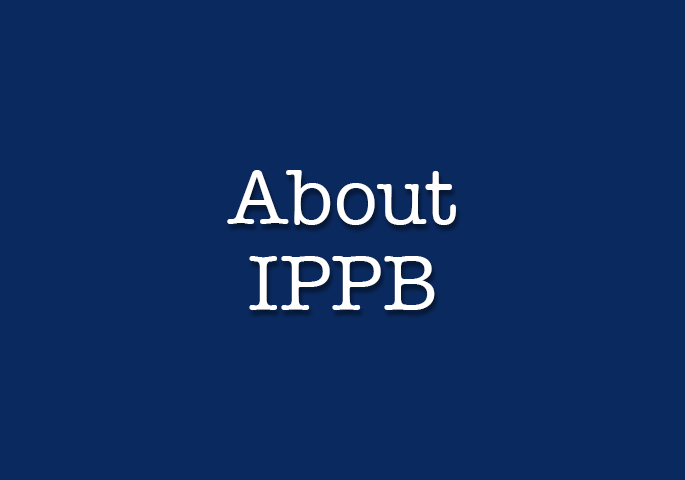
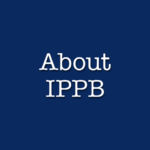
About IPPB
This gallery features an overview of intermittent positive pressure breathing (IPPB), one of the primary inhalation therapy modalities from the 1940s until the mid-1970s.


What is IPPB?
Intermittent positive pressure breathing (IPPB), a hyperinflation therapy modality, was one of the primary treatment modalities administered by inhalation therapists in the 1950s, 1960s, and 1970s.
IPPB is primarily prescribed to prevent atelectasis, to assist in clearance of secretions, and to deliver medications when other forms of therapy were unsuccessful.
IPPB delivers a prescribed gas at a positive pressure (usually 10-15 cm H20) for a specified time (usually 15 minutes.) Medications, such as bronchodilators, diluents, mucolytics, and antibiotics can be delivered via a nebulizer built into the breathing circuit. IPPB can be used on patients of all ages.
IPPB is most commonly delivered via a simple mouthpiece but flanged mouthpieces, shields/seals, oronasal masks, and 15 mm trach tube adapters can also be used, as applicable. Following the Sugarloaf Conference in 1974 where the scientific basis for IPPB was questioned, the use of IPPB significantly declined as other therapeutic techniques were substituted.
IPPB is primarily prescribed to prevent atelectasis, to assist in clearance of secretions, and to deliver medications when other forms of therapy were unsuccessful.
IPPB delivers a prescribed gas at a positive pressure (usually 10-15 cm H20) for a specified time (usually 15 minutes.) Medications, such as bronchodilators, diluents, mucolytics, and antibiotics can be delivered via a nebulizer built into the breathing circuit. IPPB can be used on patients of all ages.
IPPB is most commonly delivered via a simple mouthpiece but flanged mouthpieces, shields/seals, oronasal masks, and 15 mm trach tube adapters can also be used, as applicable. Following the Sugarloaf Conference in 1974 where the scientific basis for IPPB was questioned, the use of IPPB significantly declined as other therapeutic techniques were substituted.


1940s
Early IPPB equipment from the 1940s is featured in this section of the gallery.

1945 Bennett's Oxygen Valve
V. Ray Bennett worked with the military during WWII to improve the demand oxygen systems for aviators flying at high altitudes. Bennett’s valve improved the demand system to be breathed intermittently.
In May 1945, V. Ray Bennett filed for a patent for an “Oxygen Valve” for use in high altitude aircraft and for “administering oxygen and other gases in the therapeutic treatment of bronchial asthma, pulmonary edema, coronary thrombosis, coronary sclerosis, pneumonia, and numerous other physical ailments which have been found to be benefited by inhalational therapy.” The patent was granted October 4, 1949.
The Bennett was incorporated into the TV2P, PR-1, PR-2, AP-4, and AP-5 units.
In May 1945, V. Ray Bennett filed for a patent for an “Oxygen Valve” for use in high altitude aircraft and for “administering oxygen and other gases in the therapeutic treatment of bronchial asthma, pulmonary edema, coronary thrombosis, coronary sclerosis, pneumonia, and numerous other physical ailments which have been found to be benefited by inhalational therapy.” The patent was granted October 4, 1949.
The Bennett was incorporated into the TV2P, PR-1, PR-2, AP-4, and AP-5 units.


Mid 1940s Bennett Clinical Research X-2 Respirator
This apparatus was used by Hurley Motley and his associates to deliver IPPB to patients in respiratory failure.
A - corrugated rubber hose, B-Bendix Pressure Demand Regulator, C - Bennett Clinical Research Model X-2 Respirator, D- Bennett Face Mask
A - corrugated rubber hose, B-Bendix Pressure Demand Regulator, C - Bennett Clinical Research Model X-2 Respirator, D- Bennett Face Mask

1947 IPPB Effects on Hemodynamics
In December 1947, Dr. Andre Cournand, Dr. Hurley Motley, Dr.Lars Werko, and Dr. Dickinson Richards submitted their research on the effects of IPPB on cardiac output on human volunteers to the American Journal of Physiology.
PHYSIOLOGICAL STUDIES OF THE EFFECTS OF INTERMITTENT POSITIVE PRESSURE BREATHING ON CARDIAC OUTPUT IN MAN
Andre Cournand, Hurley L. Motley, Lars Werko, Dickinson W. Richards
American Journal of Physiology -- Legacy ContentDec 1947,152(1)162-174;
PHYSIOLOGICAL STUDIES OF THE EFFECTS OF INTERMITTENT POSITIVE PRESSURE BREATHING ON CARDIAC OUTPUT IN MAN
Andre Cournand, Hurley L. Motley, Lars Werko, Dickinson W. Richards
American Journal of Physiology -- Legacy ContentDec 1947,152(1)162-174;

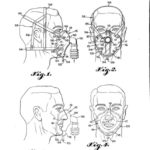
1948 Bennett's "Respiratory Facial Mask"
In May 1948, V. Ray Bennett applied for a patent for his “Respiratory Facial Mask”. In his patent application, he indicated that “the need for a comfortable, and yet tightly fitting mask is particularly pressing in cases involving pressure breathing, such as encountered in resuscitation, high altitude flying, and in positive and intermittent positive pressure breathing now being used clinically in oxygen therapy and in the treatment of pulmonary edema, asthma, cardiac conditions, and other types of respiratory depression or failure.”
The patent was granted on February 6, 1951.
The patent was granted on February 6, 1951.


Late 1940s Bennett TV-2P
An early model Bennett TV-2P ventilator is pictured.
Image from Dennis Glover


1950s
IPPB equipment from the 1950s is featured.


1950 Prototype of Bird Respirator
The first prototype of Dr. Bird’s "magnetic respirator with manually selectable positive pressure" was developed in 1950.
Image from Felix Khusid

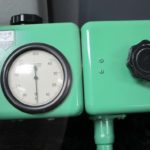
1951 Second Prototype of Bird Respirator
The second prototype of the Bird respirator was developed in 1951.
Image from Felix Khusid


1952 Emerson's "Breathing Assistor Valve"
In March 1952, J.H. Emerson filed a patent application for his invention of "Breathing Assistor Valve". Upon the patient's initiation of inhalation, the device would "assure the enforced delivery of life sustaining gas at a predetermined pressure and in predetermined volume to fill the patient's lungs without requiring any further effort on the patients part and without injury to his lungs and which when the period of artificial inhalation has terminated will permit normal exhalation by the patient." In addition, the device would operate "auxiliary equipment, as for example, an atomizer for administering medicine to the patient."
The patent was granted December 18, 1956.
The patent was granted December 18, 1956.

1950s Emerson Respiration Assistor
Emerson's "Respiration Assistor" for IPPB therapy is shown.
Image from Joseph Sullivan


1950s IPPB with Bennett Tank Model
A Bennett TV-2P unit for IPPB was designed for use with a compressed gas cylinder.
INHALATION THERAPY journal


1950s M-S-A Compressor Model
The Mine Safety Appliances (M-S-A)Company Compressor Model for IPPB from the 1950s is shown.


1956 Bennett's "Respiratory Mouthpiece"
In November 1956, V. Ray Bennett filed a patent for a “Respiratory Mouthpiece”. This shield provided a better seal than a simple mouthpiece and was better tolerated by many patients than face masks. The patent was granted on October 28, 1958.


1958 BIRD Mark 7 Released
The BIRD Mark 7 was released in 1958 with an opaque green case. It was called the Mark 7 because it was the seventh generation of Dr. Bird's original design.
Image from Felix Khusid


1958 Bird Mark 7
This announcement of the introduction of the Bird Mark 7 Respirator appeared in the June 1958 issue of the INHALATION THERAPY journal.
INHALATION THERAPY journal


1956 "Respirator Control Systems"
In January 1956, William H. Haverland filed a patent application for “Respirator Control Systems”. The unit became known as the Monaghan VENTALUNG™. The patent was granted on April 14, 1959.
1950s Monaghan VENTALUNG
The Monaghan VENTALUNG for IPPB therapy from the 1950s is shown.
Image from Dennis Glover


Interior of VENTALUNG
The housing of the Monaghan VENTALUNG is removed to show the internal components.
Image from Felix Khusid


Thompson Medi-Breather
This 1958 ad shows the Thompson Portable Medi-Breather. The portable IPPB device was contained in a luggage "train case" or "makeup" case.
INHALATION THERAPY journal


MSA Pulmonary Ventilator
This ad for the Mine Safety Appliances (M-S-A) Company's Pulmonary Ventilator appeared in the December 1959 issue of the INHALATION THERAPY journal. The device was designed to operate from an oxygen cylinder of piped system to deliver "IPPBI Therapy".

1958 Bird et al "Fluid Control Device"
In February 1958, Forrest M. Bird and Henry l. Pohndorf filed a patent for a “Fluid Control Device.” The patent for the respirator was granted on December 18, 1962.


1959 Bird Mark 8 Introduced
The Bird Mark 8 was introduced in 1959. It had an opaque green case.
Image from Felix Khusid


Ohio Dotco
This Ohio Dotco unit was cylinder-mounted.
Image from Gene Gantt


The Ohio Dotco Pressure Balanced Respirator claimed to provide improved flexibility and adjustment for all IPPB procedures in this late 1950s ad from the INHALATION THERAPY journal.


Emerson Exhalator with IPPB
The Emerson Exhalator with IPPB is shown in this ad that appeared in the June 1959 issue of the INHALATION THERAPY journal. The device provided gentle abdominal pressure to aid exhalation.


Bennett Valve
This ad for the Bennett Flow-Sensitive Valve appeared in the September 1958 issue of the INHALATION THERAPY journal.


1959 VENTALUNG Casing
In April 1959, Richard Brush filed a patent application for the “Respirator Control Valve Casing” for the ornamental housing for the Monaghan Pediatric VENTALUNG. The patent was granted on May 2, 1961.

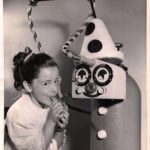
Late 1950s Pediatric VENTALUNG
The “eyes” on the clown face of the pediatric version of the VENTALUNG moved as the child breathed on the unit.
Image from Felix Khusid


1960s
IPPB equipment from the 1960s is featured in this section of the gallery.

Bennett TV-2P Video
TV-2P Video
video from Felix Khusid


1960 Monaghan VENTALUNG Ad
This 1960 ad states that the Monaghan Pediatric VENTALUNG was “the first I.P.P.B. breathing apparatus designed for therapy of children” and “makes therapy fun.”


1960 "Respiration Apparatus"
In November 1960, H. L. Gage, Jr. filed a patent application for a “Respiration Apparatus” which became known as the Bennett PR-1. The patent was granted on August 9, 1966.
1960s Bennett PR-1
A Bennett PR-1 ventilator is shown with an attached humidifier and IPPB circuit.
Image from Doug Pursley


Early 1960s Bennett Ad
Three Bennett units are shown (TV2P, PR-1, and PV3P) in this ad along with options for medication delivery (including glass nebulizers.) This ad appeared in an early 1960s issue of the INHALATION THERAPY journal.


1960s Bennett TV-2P
A Bennett TV-2P unit is shown. Prior to piped in oxygen in hospitals, the TV-2P was designed to connect to compressed gas cylinders. Once piped in oxygen became standard in hospitals, the TV-2Ps were retrofitted for piping system connections and pedestal mounts.
Image from Jim Ciolek

1960s IPPB with Bennett PV-3P
Often mistaken for a "TV-2P", the only difference originally was that the PV-3P was pedestal-mounted and used piped in oxygen or air while a TV2P was "tank" (cylinder) mounted.
Image from Doug Pursley


1961 Pressure Breathing Therapy Unit
In October 1961, N.F. Beasley applied for a patent for “Pressure Breathing Therapy Unit”. The device which contained a compressor and was designed to be portable and later would be known as the Bennett AP-4. The patent was granted on December 7, 1965.


1960s Bennett AP-4
A Bennett AP-4 unit was a portable unit for IPPB. This was a popular unit for home therapy in the 1960s and 1970s.

1960s Bennett AP-5
The Bennett AP-5 is shown with a Bennett Cascade humidifier for an outpatient IPPB treatment.


1960s Bennett AP-5
The front of the Bennett AP-5 is shown.
Image from Lindsay Fox


Bennett AP-5
The front of the AP-5 is shown.
Image from William LeTourneau


Air-Shields PBA
This ad from the June 1962 issue of INHALATION THERAPY shows the Air-Shields' Pressure Breathing Assistor (PBA).

NCG IPPB
This ad for the NCG IPPB apparatus appeared in the June 1962 issue of INHALATION THERAPY journal.


Bird Mark 7 – Aluminum Housing
This Bird Mark 7 respirator circa 1961 had an aluminum housing. It is owned by Felix Khusid.
Image from Felix Khusid


1963 Bennett PR-2
The Bennett PR-2 is shown. The unit could be used for IPPB treatments as well as continuous ventilation.
Illinois Central College Archives, 1999


1964 Transparent Cases Introduced
Transparent cases for the Bird Mark 7 were introduced in 1964.
Image from Glenn Tammen


1965 IPPB Training Manual
This 1965 IPPB training manual was from the Hospital of Good Samaritan Medical Center, Los Angeles, California.
Image from Steve and Mary DeGenaro


Late 1960s Monaghan M510 IPPB
The front of the Monaghan M510 unit from the 1960s is shown.
Image from James Sullivan


1969 IPPB
In this 1969 photo, an inhalation therapist holds a face mask to administer an IPPB treatment.
Image from Aubrey Patterson

1970s
IPPB equipment from the 1970s is featured in this section of the gallery.


1970 M-S-A Fluidic Breathing Assistor
This ad for the M-S-A Fluidic Breathing Assistor for IPPB appeared in the December 1970 issue of the INHALATION THERAPY journal.


IPPB Treatment Room
Many departments offered multi-patient treatment rooms in the 1960s and 1970s where ambulatory inpatients and outpatients could receive IPPB treatments concurrently. These rooms were sometimes nicknamed "puffing parlors". This slide shows one patient receiving an IPPB treatment from the row of wall-mounted Birds.
Image from Aubrey Patterson


Checking Out the Birds
Preparing for the next round of IPPB treatments in 1970.
Image from Aubrey Patterson

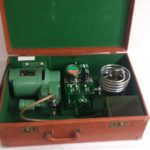
Homemade "Porta-Bird"
Prior to the availability of portable units for transport and home care, this suitcase was modified to house a Bird Mark 7 ventilator and compressor.
Image from Kevin Christenson


1972 PortaBird Patent
In July 1971, a patent application was filed for a "portable respirator" for prescribed IPPB or topical pulmonary chemotherapy. The patent was awarded to Forrest M. Bird et al on December 26, 1972.


PortaBird
A Bird PortaBird from the 1970s is shown.
Image from Felix Khusid


PortaBird
Instructions for the PortaBird and assembly of the nebulizer circuit were affixed to the top of the unit.
Image from Felix Khusid


PortaBird Case
The PortaBird enclosed in its carrying case is shown.
Image from Felix Khusid


Early 1970s BIRD Mark 8
Student respiratory therapists from the early 1970s spent time in labs reviewing the equipment used in their clinical rotations. Here a group is shown with the Bird Mark 8.
Image from Steve and Mary DeGenaro


1970s Monaghan M520
The Monaghan M520 model used for IPPB therapy is shown.
Image from Jim Ciolek


1970s IPPB Treatment
In this photo, the Bennett PR-2 ventilator was used to administer an IPPB treatment.
Image from Steve and Mary DeGenaro


1974 Sugarloaf Conference
The National Heart and Lung Institute and the American Thoracic Society convened scientists to review the efficacy of respiratory therapy modalities. The Sugarloaf Conference findings on IPPB, were published in the December 1974 issue of the American Review of Respiratory Disease. John F. Murray's conference summary identified the misuse of IPPB, one of the primary clinical modalities of respiratory therapy practitioners at that time.
Image from Gayle Carr


1980s
IPPB equipment from the 1980s is featured in this section of the gallery.


1981 Monaghan 515
The Monaghan 515 model for IPPB was released in 1981.
Monaghan Medical Corporation

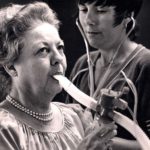
Monitoring IPPB
A respiratory therapist is shown monitoring a patient during her IPPB treatment.
Image from Steve and Mary DeGenaro


1990s and Beyond
IPPB in the 1990s and beyond is featured.


1993 – IPPB CPG Released
In 1993, the AARC released a Clinical Practice Guideline for IPPB.


2003 IPPB Update
The AARC released an update for the IPPB Clinical Practice Guideline in 2003.


Images to share?
Please follow instructions to contribute images for this gallery.